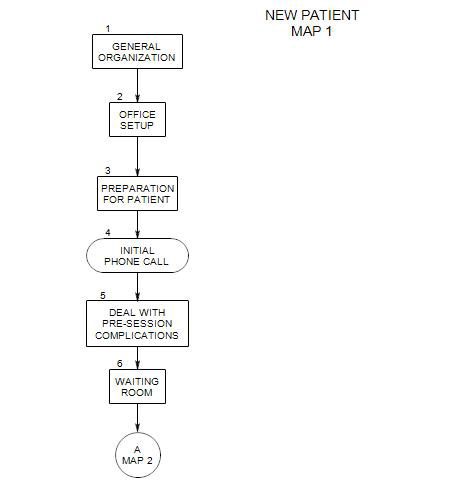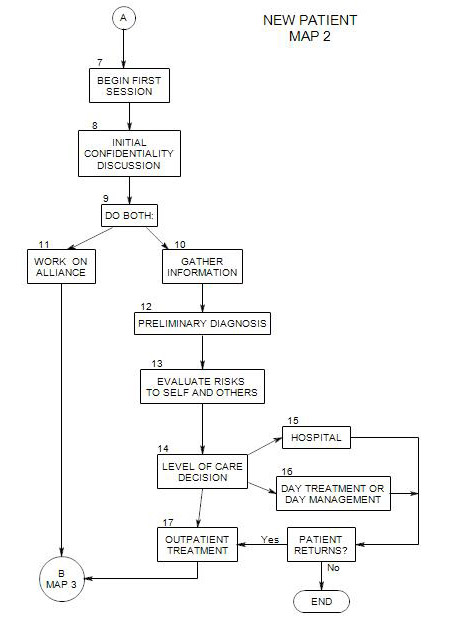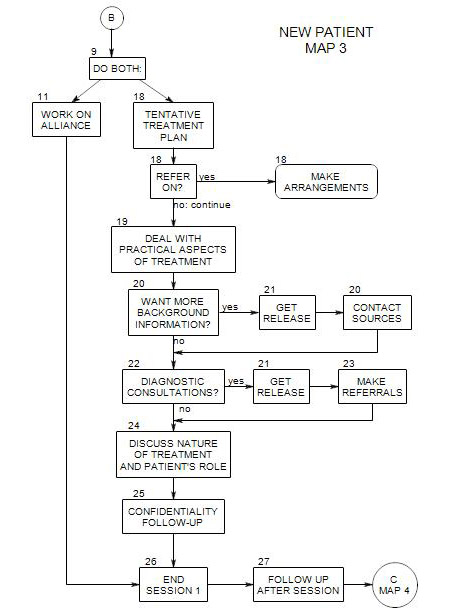23. REFERRING FOR A DIAGNOSTIC CONSULTATION
-
Appears on Map 3
Follows Section 22 and Section 21
When sending a person to another professional for a consultation, you want to do as much as possible to see that
- he/she gets there in a timely way
- the other professional understands what you need and why, and is able to provide it
- the information is sent to you in a timely way.
Typically the referral is made during session, in the diagnostic context. Your patient may want to understand
- the reasons that you believe the consultation will be useful to him/her
- why you can’t gather the information yourself
- how the information will be used
- names of consultants, telephone numbers and addresses
- justification for each one [could be as simple as I trust all of them.]
- how to make contact
- whether you will make contact also



